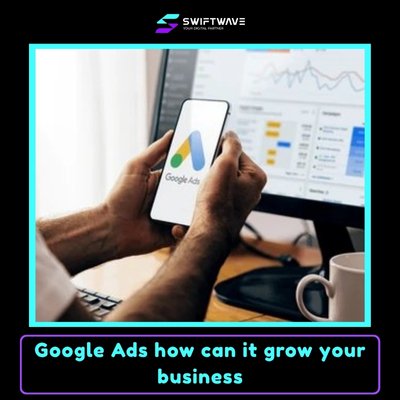Digital Marketing and Advertising are no longer just tools for online visibility they’re the backbone of modern business growth. Every brand, from startups to global enterprises, relies on digital channels to reach, engage, and convert audiences faster than ever.
With AI transforming campaigns, data privacy reshaping strategies, and consumer behavior constantly shifting, the marketing landscape is evolving at a pace we’ve never seen before.
To stay competitive, marketers must understand not just what’s changing, but why it’s changing and how to adapt their strategies for lasting impact.
Future of Digital Marketing and Advertising
In this guide, we will explain how the future of digital marketing and advertising is being redefined — and what steps you need to take to stay ahead.

Core Shifts Reshaping Marketing
Digital marketing is evolving around five major shifts that are reshaping how brands reach and engage audiences. These aren’t temporary trends; they’re structural changes that redefine marketing fundamentals.
The first major shift is AI integration. Artificial Intelligence is becoming central to marketing strategy. It is being used to predict consumer behavior, automate campaigns, and personalize content at scale.
Instead of manually managing ad sets, AI systems now adjust bidding, placements, and creative delivery in real time. This helps marketers improve efficiency and reduce wasted spend.
The challenge is to understand how to train these tools with accurate inputs so that they reflect brand values and tone. In the next few years, the ability to use AI tools effectively will separate data-driven marketers from guesswork-driven ones.
The second shift is data privacy. With increasing restrictions on data collection and the removal of third-party cookies, marketers can no longer rely on tracking users passively.
Instead, the focus has moved toward first-party data information directly collected from audiences through subscriptions, purchases, and website interactions.
Brands that build consent-based systems will have better control and reliability over their targeting strategies. This change is not just about compliance but also about trust. People want to know how their data is used. Transparency will become a differentiator.
The third key shift is the dominance of video content. Across every major platform, from TikTok to YouTube Shorts, video has become the most consumed and shared content format.
Attention spans aren’t disappearing; they’re being filtered. People still engage deeply—but only with content that feels relevant, quick, and authentic.
Marketers who focus on short-form educational, entertaining, or practical videos will hold attention longer than those relying on static visuals or long text. The shift isn’t just about format; it’s about storytelling speed.
The fourth change involves search behavior. SEO is moving from keyword-based optimization to intent-based and conversational discovery.
AI-driven search experiences like Google’s SGE and chat-based queries are replacing traditional “page one” search models. That means content needs to answer questions, not just repeat keywords.
Brands that structure their content around problem-solving and helpfulness will remain discoverable even as algorithms evolve.
Lastly, social commerce is transforming social media from an awareness tool into a direct sales channel. Audiences can now discover, evaluate, and purchase products without leaving their social app.
This changes how marketers measure success—engagement and conversion are now happening in the same ecosystem. Businesses that adapt to platform-native selling will outperform those relying solely on website traffic.
These shifts demand marketers who understand technology, communication, and consumer psychology together—not as separate functions.
What the Future Marketer Looks Like
The role of a marketer is changing. The future marketer isn’t just a content creator or ad buyer—they are a strategist who understands data, automation, and human behavior.
A future-ready marketer operates at the intersection of three skills: strategy, technology, and creativity. Strategy involves understanding audience segments, customer journeys, and long-term brand positioning. Technology includes AI tools, analytics platforms, and CRM systems.
Creativity involves using these insights to build messages that connect with people emotionally and logically. The combination of all three makes a marketer adaptable in any environment.
The first defining trait of future marketers is data fluency. They know how to interpret analytics—not just collect them. They can translate numbers into insights and insights into actions.
This doesn’t mean being a data scientist; it means understanding what metrics actually drive results. In a data-saturated world, clarity is power.
The second trait is AI literacy. As automation expands, marketers must know how to work alongside AI instead of fearing it. That means understanding prompt writing, model fine-tuning, and validation of AI outputs.
The advantage lies not in using AI for everything but in knowing when human judgment is still essential—like tone, empathy, and ethics.
The third trait is communication leadership. Marketing will continue to be a team effort across design, content, media buying, and tech. The best marketers will act as connectors—people who align creative vision with business goals.
They will be able to explain complex data or automation results in plain language to clients, managers, or team members.
Finally, future marketers will prioritize community and relationships over pure reach. Audiences have become resistant to cold ads. They prefer brands that engage directly, respond consistently, and provide real value.
This means marketers will act more like community managers, creating two-way dialogue instead of one-way promotion. Building smaller but more loyal groups of followers will be more profitable than chasing large but disengaged audiences.
In summary, the marketer of the future is not a specialist in one tool or platform. They are adaptable thinkers who understand how tools, data, and human psychology connect to produce growth.
How to Future-Proof Your Marketing
To stay competitive in this evolving landscape, businesses and marketers need to future-proof their marketing strategies through consistent adaptation. This requires systems, not just campaigns. Here’s how to do it step by step.
1. Build Strong Data Foundations
Start by owning your audience data. Create systems that collect first-party data through opt-ins, newsletters, and purchase histories. Use analytics tools to understand how customers interact with your brand across channels.
Make sure your CRM is integrated so that you can track leads from the first touch to conversion. This will reduce dependency on third-party platforms.
2. Adopt AI with Purpose
AI should support your decisions, not replace them. Use automation for repetitive tasks like scheduling, ad optimization, or customer segmentation. However, ensure that every AI-generated output is reviewed by a human before going live.
The combination of machine speed and human oversight ensures quality and consistency. Invest in training your team to understand AI workflows early—it’s becoming a basic professional skill.
3. Strengthen Your Brand Messaging
A future-proof marketing system depends on clear communication. Define what your brand stands for and how it helps customers. Simplify your message so that it’s easy to understand across all platforms.
When algorithms change, your audience will still recognize your message. Strong positioning and consistency make you less vulnerable to platform volatility.
4. Prioritize Community over Virality
Focus on relationships. Encourage feedback, create membership programs, and respond to comments regularly. The most sustainable growth comes from repeat customers and advocates who promote your brand organically.
Social media engagement should go beyond likes—build spaces where people interact with your brand directly, like WhatsApp groups, Discord servers, or newsletters.
5. Diversify Marketing Channels
Never depend entirely on one channel for sales or leads. Combine organic traffic (SEO, email) with paid advertising (Meta, Google Ads) and owned platforms (website, app).
Diversification protects your brand from sudden algorithm changes or account restrictions. When your system doesn’t rely on one traffic source, your growth remains stable.
6. Measure What Matters
Analytics tools offer hundreds of metrics, but not all are equally valuable. Focus on core KPIs that represent business results—conversion rate, cost per acquisition, customer retention, and lifetime value.
Avoid chasing vanity metrics like impressions or likes. Use data to make small, ongoing improvements instead of one-time reports.
7. Keep Learning and Adapting
Digital marketing changes fast. Platforms update their algorithms, privacy laws evolve, and audience behavior shifts.
Dedicate time to regular learning follow trusted sources, attend workshops, and experiment with new formats. Teams that keep learning move faster than competitors who wait for trends to become mainstream.
Conclusion
The future of Digital Marketing and Advertising is not about chasing the latest trend — it’s about building adaptable systems that evolve with technology and consumer behavior.
As AI, data privacy, and social commerce reshape the industry, success will depend on how quickly brands can integrate new tools while maintaining trust and authenticity.
Marketers must focus on strategy, measurable outcomes, and consistent communication rather than vanity metrics or temporary hype.
The businesses that thrive will be those that combine innovation with understanding using automation for speed, data for precision, and human insight for connection.
In short, the future of marketing belongs to those who stay agile, data-smart, and genuinely human in their approach.



